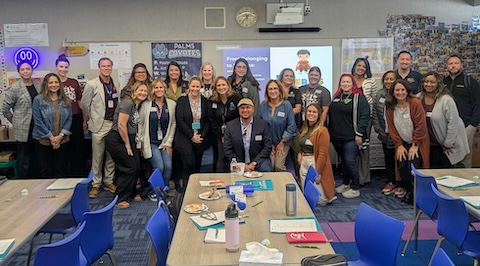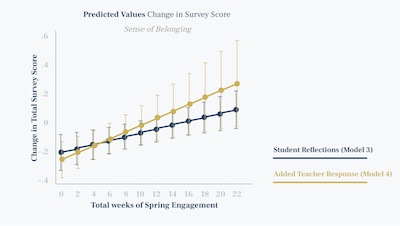Inspiring a Growth Mindset Through Student Reflection


Four years ago, I moved from the growing suburbs east of Seattle to a beach town in the North Coast of Oregon. For me, the move was cathartic. The high pressure environment of the Eastside had taken its toll, and I had fallen out of love with teaching. Well, that’s not entirely true. I still loved teaching, but I was fed up with the outside influences — parents, bureaucracy from the district office, and pressure from the state. What I found here in Oregon was space to teach with hardly any outside influences on my classroom. I taught the same standards and the same content, but I did so with a sense of joy and freedom. As I became part of the learning community and took on larger roles, I fell back in love with my work in education.

The trouble began when we got our state test results back. At first, we didn’t have a math curriculum and there was a new test. The test scores that second year arrived: 18% passing in math at my grade level. I was horrified. And confused! Math in 5th grade was a struggle in my old district, but it was a struggle with 65% passing. I began to wonder about the differences. We used the same standards, I was the same teacher, and we had decent curriculums at both schools… I firmly believe that a good teacher can overcome almost anything put in front of her, and so I found these test scores completely puzzling. Even in a different state, with different materials, and different socio-economic realities, I should be able to see the same results. I set out to to help students understand that they could learn, and they could improve their skills.
I latched on to our growth mindset work and set out to help all my students understand that they were learning in math, even if they were learning slowly. We used Google Sheets and graphed our pre and post tests for every unit. My hope was that students who were still failing would see how much they had actually learned. The difference in a bar graph between 0% and 57% is pretty encouraging. I had hoped that the visual, along with all the verbiage we were teaching the kids about growing their brains would help them see what could be achieved in math.
At the end of the year, what I had were some very impressive looking graphs, and 23% passing the SBAC. Things had improved, but what was missing in this process was the reflection piece. Students received their scores on their chapter tests, entered the numbers into their document, then closed their Chromebooks and went on to the next task. No one reflected on what had been learned, on mistakes made, on the successes achieved.
Over the summer, I ran across Sown to Grow and was taken by the reflection piece. It seemed so simple, yet it is so powerful. In thinking about my practice as a teacher, reflection is a huge part of my work. When a lesson goes south, I ask myself “why?”; I name the reasons it fell apart so they won’t be repeated. When a lesson is amazing, I do the same; I identify the successes so I might do that great work again. Asking our kids to do this same work is important. They do it in sports, as they refine their skills, and they even do it in gaming, as they progress to different levels.

What I have found in the last two months is that students are readily able to do this reflecting work if they are asked to do it, and if they are given time. After a recent pre-test on division, students reflected in Sown to Grow on what they already know, and what they still need to learn:
“I know that division is multiplying backwards. I need to learn long division.”
“I know how to do single digit division without remainders. I need to know remainders.”
“I know how to divide mentally. I still need to learn how to estimate.”
“I know how to divide 10 and 5 to any numbers, and I need to learn how to divide two digits to 3 digits.”
Identifying successes and naming the gaps has focused our learning. I celebrate a bit more with this class on what they already know and have honest conversations about what still needs to be mastered. I don’t know, yet, how this will impact our SBAC scores. At the moment, our work in Sown to Grow is positively impacting our collective outlook and, along with our growth mindset work, helping students to understand that they can learn.




.png)
.png)
.png)







